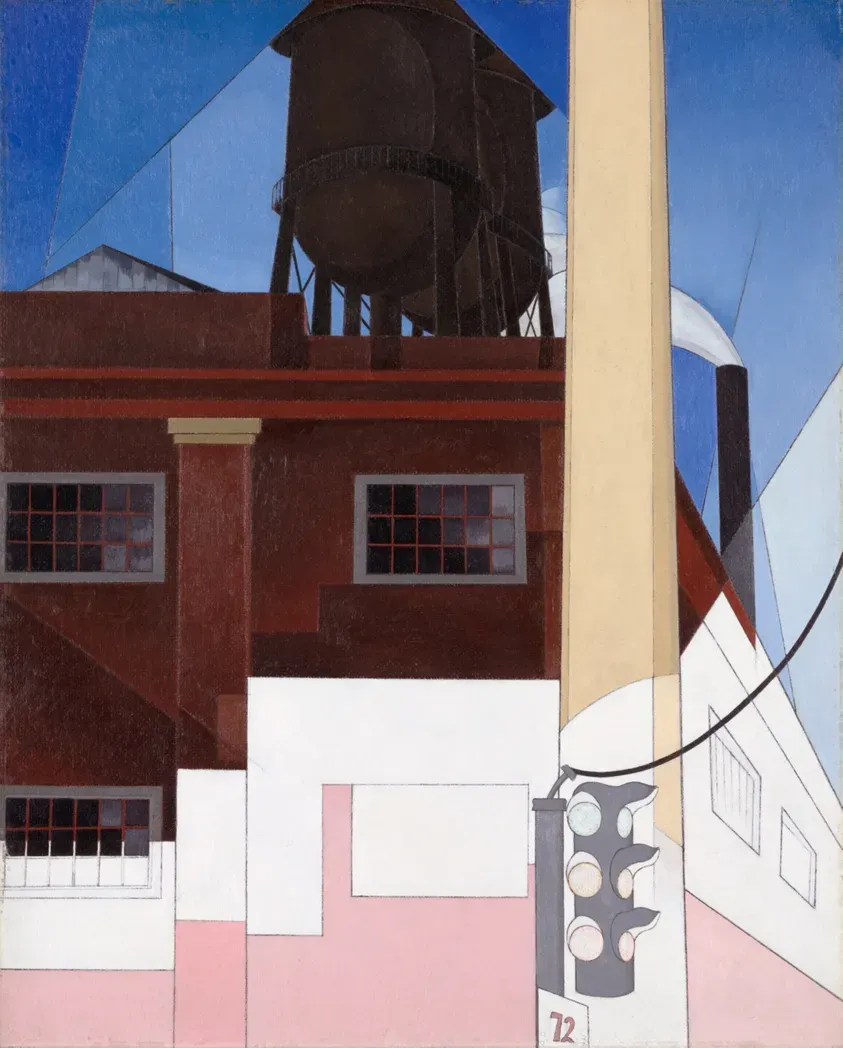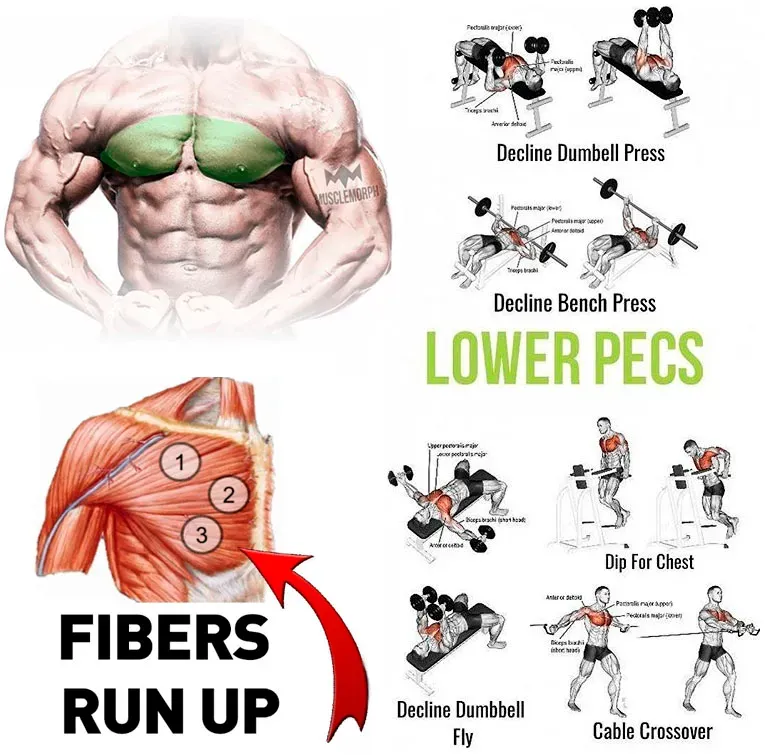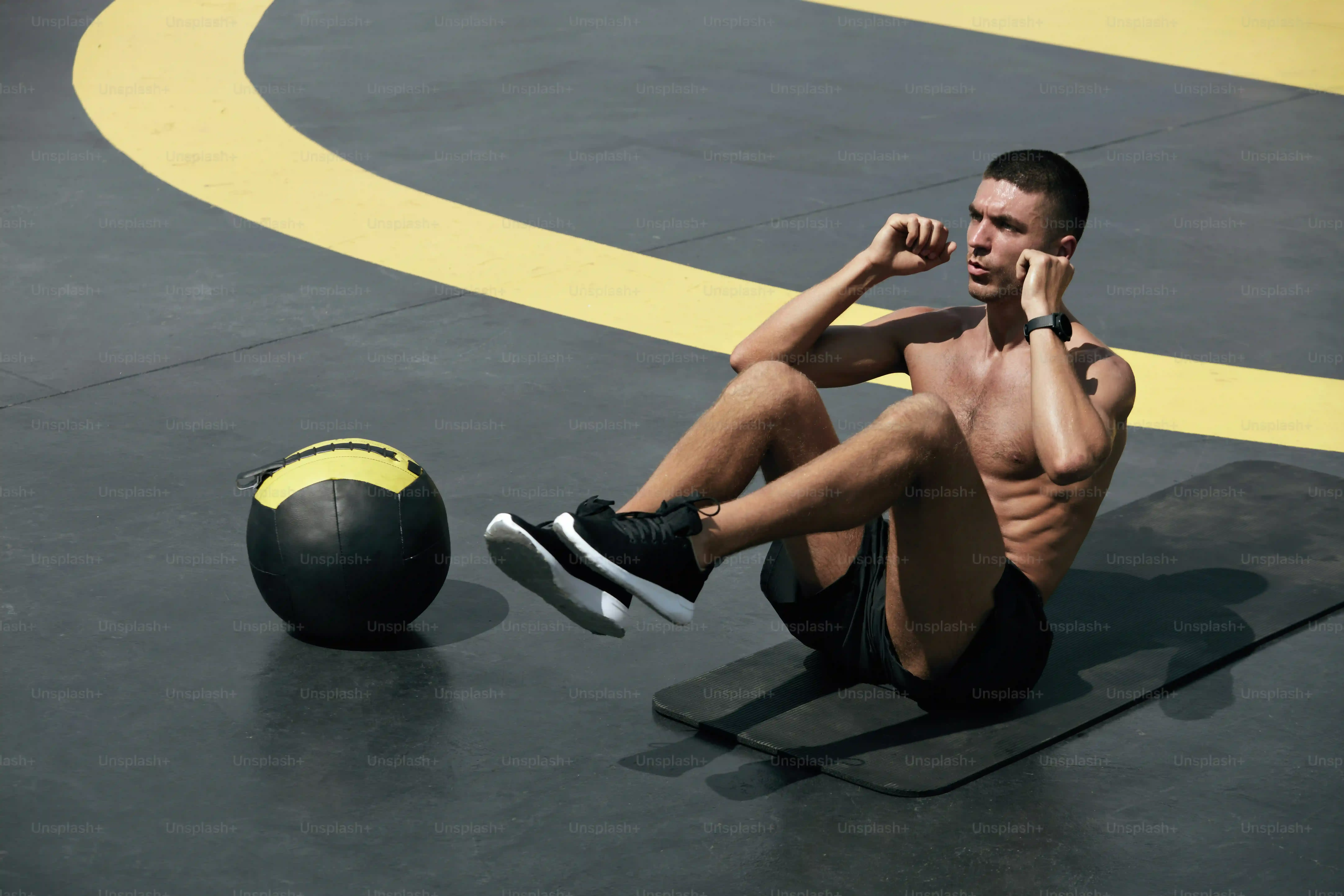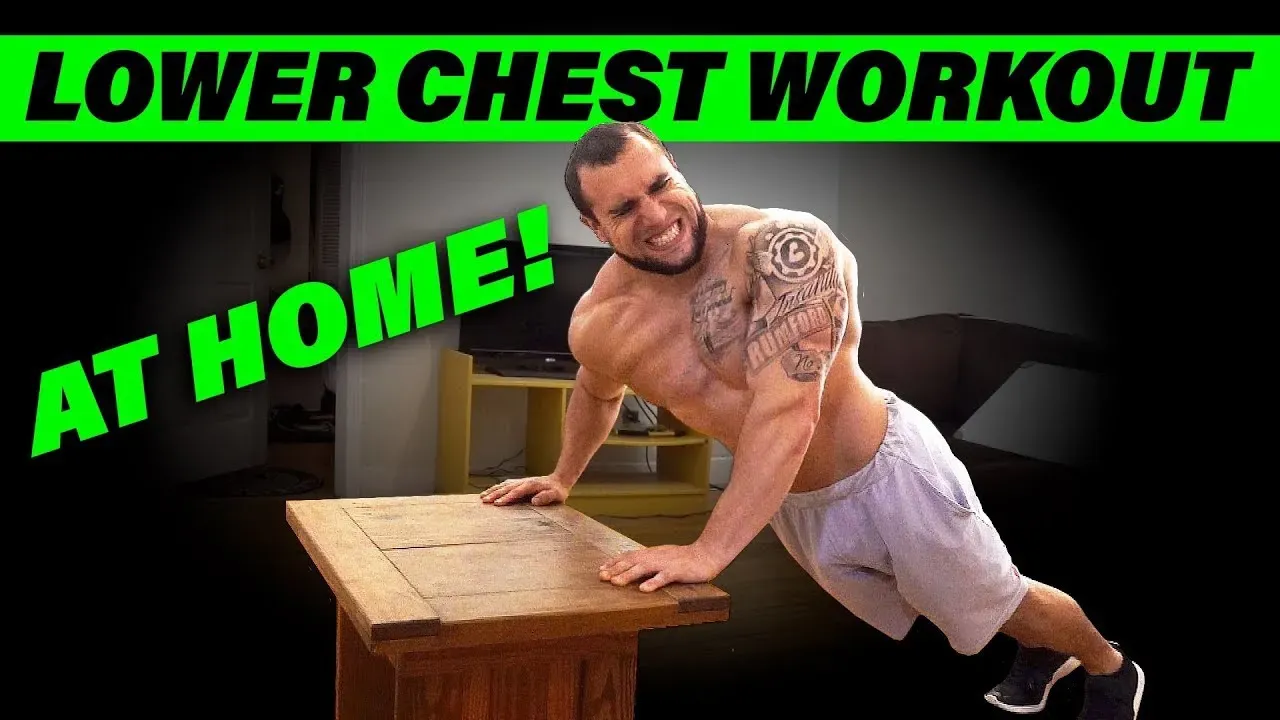Table of Contents
Let's be honest, getting to the gym isn't always easy. Life happens. But that doesn't mean your fitness goals have to take a back seat. If you're looking to build a well-rounded chest, specifically targeting that often-neglected lower portion, you might wonder if it's even possible without heavy gym equipment. Good news: it absolutely is. You can achieve significant results right from your living room.
Why Train Your Lower Chest at Home?

Why Train Your Lower Chest at Home?
Ditch the Commute, Build the Muscle
Look, life gets busy. Maybe your gym is too far, or maybe the thought of navigating crowded racks just isn't appealing today. That's where the beauty of training at home kicks in. You lose zero time driving, parking, or waiting for equipment. You literally roll out of bed (or off the couch, no judgment here) and you're ready to go. Focusing on at home workouts for lower chest means you can sneak in a solid session whenever you have a spare 20-30 minutes. Consistency is king in building muscle, and removing the commute barrier makes consistency a whole lot easier.
Master Bodyweight Control and Strength
Thinking you need a heavy decline press to hit the lower chest? Think again. Bodyweight exercises, especially variations of push-ups, are phenomenal for building strength and control. When you train at home, you learn to manipulate your own body weight effectively. This isn't just about aesthetics; it builds functional strength that translates to everyday activities. Learning to control your body through a full range of motion, like in decline push-ups or dips between sturdy chairs, forces your lower chest fibers to engage deeply. It's a different kind of stimulus than just pushing heavy weight, focusing more on muscle activation and stability.
- Saves time and eliminates travel.
- Builds practical, functional strength.
- Requires minimal to no equipment.
- Allows for consistent training frequency.
- Develops better body awareness and control.
Build a Solid Foundation, Reduce Injury Risk
Starting with bodyweight exercises, particularly when targeting areas like the lower chest, helps build a robust foundation. You learn proper form without the added stress of heavy external load. This focus on form and control is critical for preventing injuries down the road, whether you stick to home workouts or eventually hit the gym. Mastering the mechanics of movements like decline push-ups ensures your shoulders and elbows are in safe positions, strengthening the supporting muscles as well. It's about building resilient strength, not just moving weight for the sake of it. That's a compelling reason why training your lower chest at home is a smart move.
Effective At Home Workouts for Lower Chest

Effective At Home Workouts for Lower Chest
Decline Push-ups: Your Bodyweight Decline Press
let's get specific about effective at home workouts for lower chest. The king of bodyweight lower chest moves is the decline push-up. Think of it as your home gym's answer to the decline bench press. By elevating your feet, you shift the angle of your body, forcing the lower fibers of your pectoralis major to work harder. The higher your feet, the more challenging it becomes, and the more emphasis you place on that specific area. Find a sturdy chair, a coffee table, or even the bottom step of a staircase. Get into a standard push-up position with your hands slightly wider than shoulder-width, stacked directly under your shoulders. Keep your body in a straight line from head to heels. Lower your chest towards your hands, maintaining tension, and push back up powerfully. Control the descent; don't just drop.
Chair Dips: Vertical Power for the Pecs
Another fantastic tool in your arsenal for effective at home workouts for lower chest is the dip. If you have parallel bars, great, but two sturdy chairs work just fine. Position the chairs shoulder-width apart. Place your hands on the edges, fingers pointing forward or slightly out. Step between the chairs, supporting yourself with straight arms. Lower your body slowly by bending your elbows, keeping them tucked close to your sides (flaring them out hits more shoulder). Lean forward slightly as you descend; this forward lean increases the stretch and activation in the lower chest. Push back up to the starting position. If this is too difficult, keep your feet on the floor initially and focus on the controlled lowering phase. This vertical pressing motion is killer for building thickness in the lower pec line.
Want to make these exercises hit harder?
- Slow Negatives: Take 3-5 seconds to lower yourself. This increases time under tension.
- Pause at the Bottom: Hold the deepest point for a second to eliminate momentum.
- Explode Up: Push back to the top as quickly and powerfully as possible.
- Vary Foot Height (Decline Push-ups): Start low and gradually increase elevation as you get stronger.
- Use Resistance Bands: Loop a band around your back and hold the ends in your hands for added resistance on the push-up.
Pseudo Planche Push-ups: Advanced Bodyweight Challenge
Ready for something more advanced in your effective at home workouts for lower chest? Pseudo planche push-ups aren't strictly a lower chest exercise like declines or dips, but they work the entire chest, shoulders, and core in a way that builds incredible strength and density, with significant carryover to lower chest development due to the forward lean. Start in a push-up position, but place your hands further down towards your hips, fingers pointing slightly back. Lean your weight forward aggressively over your hands, keeping your body straight. Perform push-ups in this position. The more you lean forward, the harder it gets. This requires serious core strength and shoulder stability, but the chest activation, including the lower portion, is intense. Master the standard decline push-up and chair dip first before attempting this beast.
Structuring Your At Home Lower Chest Routine

Structuring Your At Home Lower Chest Routine
Finding the Right Frequency and Placement
Alright, so you've got these killer exercises like decline push-ups and chair dips dialed in. Now, how do you actually build them into a routine that makes sense? You can't just bang out 50 push-ups every day and expect miracles. Your muscles need recovery to grow. For most people starting out with at home workouts for lower chest, hitting this muscle group two to three times a week is a solid starting point. You could tack it onto the end of an upper body day, dedicate a specific push day to it, or even integrate it into full-body workouts if that's your jam. The key is consistency and giving your muscles 24-48 hours to recover between sessions. Don't overthink it; just find slots in your week where you can commit.
Building Your Sets and Reps
When it comes to sets and reps for your at home workouts for lower chest, think quality over quantity. Aim for sets where you're challenging yourself, typically in the 8-15 rep range for hypertrophy (muscle growth). If you can easily do more than 15 reps of decline push-ups with your feet elevated, it's time to find a higher surface or try a harder variation like pseudo planche push-ups. Start with 3-4 sets per exercise. Maybe do 3 sets of decline push-ups, rest for 60-90 seconds, then move to 3 sets of chair dips. Don't just grind out reps; focus on controlled movements, feeling the lower chest contract. If your form breaks down, end the set. It's better to do 10 perfect reps than 20 sloppy ones.
- Workout Split Options:
- Upper Body Day (add 2-3 lower chest exercises)
- Push Day (include lower chest exercises after main pressing)
- Full Body (integrate 1-2 lower chest exercises per session)
- Rep Ranges: 8-15 reps for muscle growth
- Sets: 3-4 sets per exercise
- Rest: 60-90 seconds between sets
Progression and Listening to Your Body
You won't build a stronger lower chest doing the same thing forever. Progression is non-negotiable in Structuring Your At Home Lower Chest Routine. Once 3 sets of 15 reps of decline push-ups at a certain height feel easy, increase the height of your feet, slow down the negative portion of the rep, add a pause at the bottom, or try a harder variation. You could also decrease rest time between sets for added intensity. Just as important as progression is listening to your body. If something feels off, like joint pain, back off. Rest and recovery are when muscles actually grow. Don't be afraid to take an extra rest day if you're feeling beat up. This isn't a race; it's about sustainable progress. Consistency, smart progression, and paying attention to your body are the pillars.
Progressing Your At Home Workouts for Lower Chest

Progressing Your At Home Workouts for Lower Chest
Making Bodyweight Harder: It's About Leverage and Time
so you've nailed those decline push-ups with your feet on the coffee table, maybe even moved up to the dining chair. You can crank out sets of 15-20 without feeling much burn. This is exactly where many people hit a wall with at home workouts for lower chest. They think if they can do a ton of reps, they're good. Wrong. Progression isn't just about adding reps indefinitely. It's about increasing the challenge. For bodyweight, that means manipulating leverage or increasing time under tension. Can you slow down the lowering phase of your decline push-up to five seconds? Can you pause for two seconds at the very bottom, just above the floor? Can you elevate your feet even higher on the staircase? Each of these tweaks makes the same exercise significantly harder, forcing those lower pec fibers to adapt and grow stronger. It’s about making 10 reps feel like a genuine struggle, not just an endurance test.
Adding Resistance or Trying Tougher Variations
Once you've played with tempo, pauses, and elevation for your standard decline push-ups and chair dips, you might need more resistance. You don't need a weighted vest (though if you have one, great). Grab a backpack and fill it with books or bottles of water. Drape it across your upper back for decline push-ups. For chair dips, you can hold a weight between your ankles, or again, strap on that loaded backpack. If you're feeling ambitious, start working towards single-arm variations of push-ups (even assisted ones) or exploring more challenging dip variations. Remember those pseudo planche push-ups we talked about? That's a serious jump in difficulty. Progressing Your At Home Workouts for Lower Chest requires creativity and a willingness to push past comfort zones, even without traditional weights.
How do you know it's time to progress?
- You can easily hit the upper end of your target rep range (e.g., 15 reps) for all sets.
- The last few reps don't feel challenging.
- Your recovery is quick, and you feel minimal soreness.
- You've been doing the same variation for several weeks without increasing difficulty.
Making At-Home Lower Chest Gains Happen
So, there you have it. Building a stronger, more defined lower chest doesn't require a gym membership or racks of weights. These at home workouts for lower chest, when performed consistently and with proper form, provide a legitimate path to progress. It boils down to making the commitment, understanding the movements, and pushing yourself within your own space. Don't expect overnight miracles, but stick with it. The equipment might be minimal, but the potential for results is real if you put in the work.
